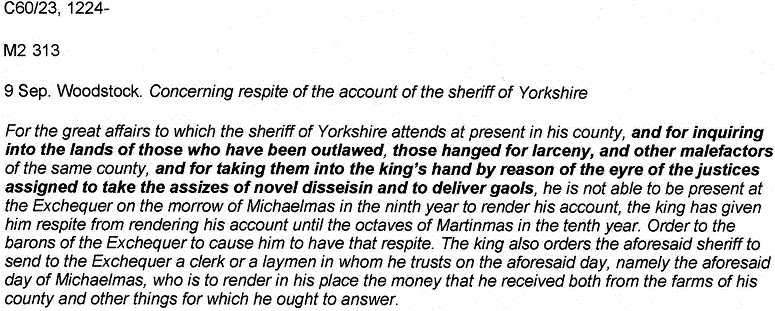The Dean and Chapter of York
The top two entries relate to Brian de Lisle’s Forest eyre which was initially summoned to York in 1221. He was chief justice of the forest from 1221 to 1224, and sheriff of Yorkshire in 1233-4. By 1224 the men of St Peter’s York and been amerced (punished by assessment or fine) at the Forest Eyre session. Robert Lynley has suggest that Robert Hod (Hobbehod) who may be Robert Hod de Linton, could have fled the Forest eyre, and therefore became a fugitive. Pattishall, who is mentioned in the third entry was, as Robert Lynley has pointed out, one of Lexington’s associates in July 1225, when judgement was passed on Robert Hod, which possibly meant that the demand for his chattels were put in respite, (temporary suspension) until the next demand. This led to the suggestion that the entries were thus repeated until 1234 when the cross was inserted. (the cross was possibly a notification that a summons was made for the monies owed) Robert Lynley has further suggested that the dispute over Hobbehod’s chattels was finally resolved in the summer of 1240, when the Justices itinerant again came to Yorkshire to hear forest pleas and others; there is a reference to this in the fourth entry. It seems uncertain however, that Hobbehod was part of the Forest eyre: ‘If Robert Hod had forfeited his chattels for flight (when accused of a forest offence) at the time of Brian de Lisle’s eyre, it would be under a heading connecting him with that session that the chattels would have been noted. Even if he had subsequently been captured he could not have been delivered by Lexington at his gaol delivery, which he was, since his powers did not extend to trying those accused of forest offences. Thus the entry connecting the forfeited chattels with Lexington’s session must be related to a common law criminal offence’.*
* The source for this statement can be provided.

|



